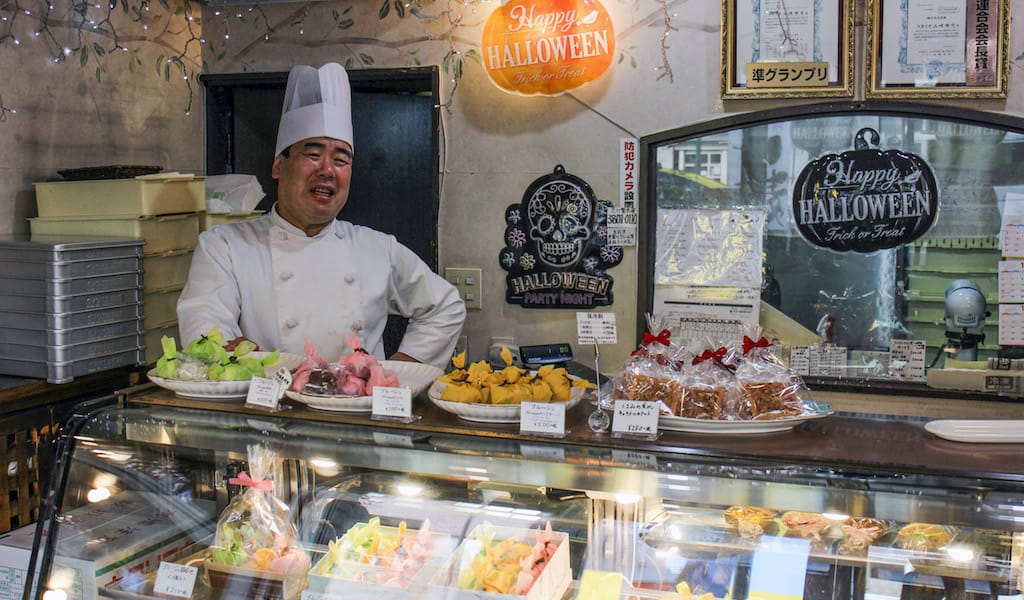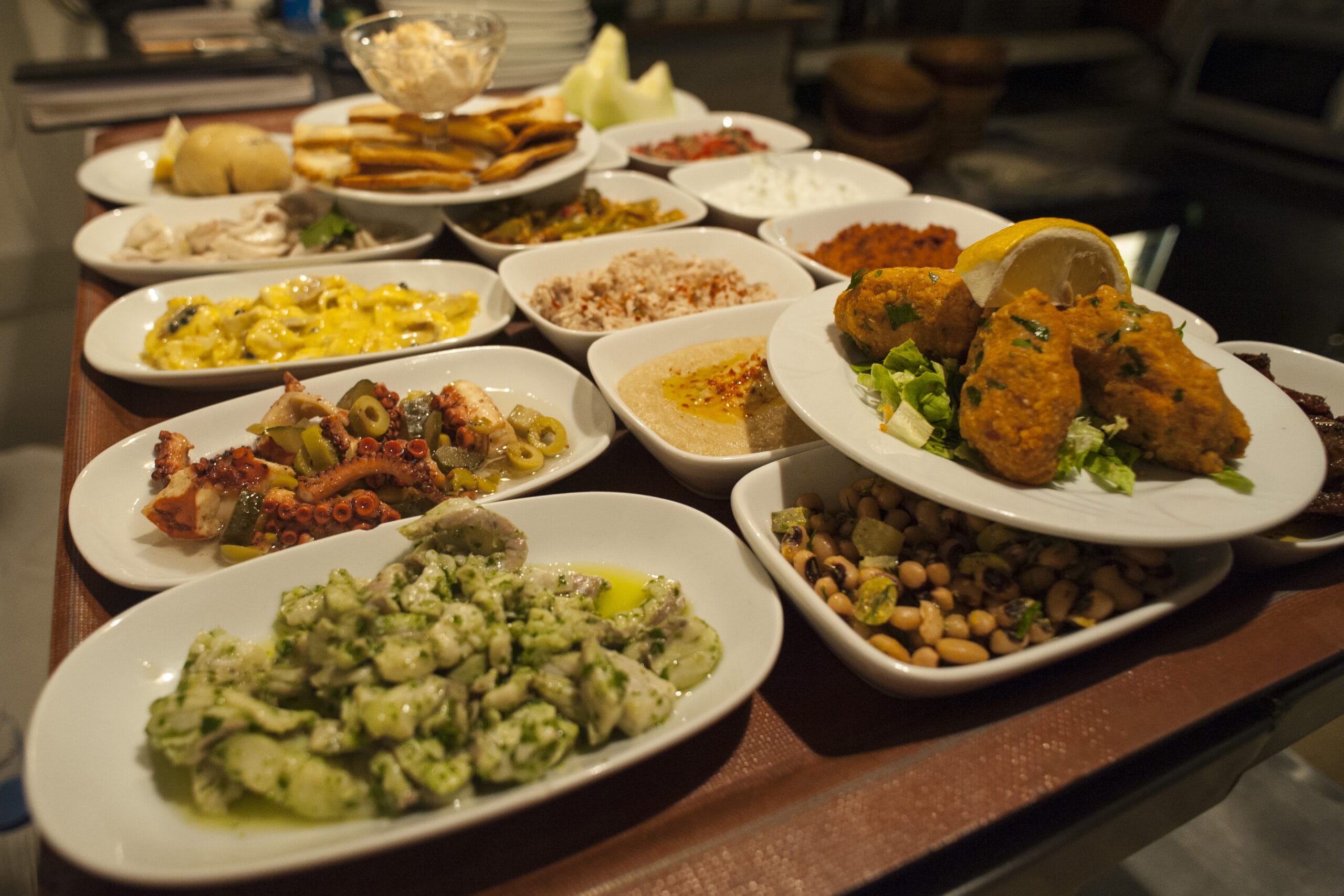Ramen joints are often easily recognizable, either by large windows illuminating slurping customers, a vending machine dispensing meal tickets at the doorway, or the brightly lit signs; usually it’s some combination of the three.
When it comes to Ura Sablon, however, one might easily pass it by. The narrow entrance is tucked away between a storage locker and an air conditioning unit; a small notice, illegible unless up close, is attached to a traffic cone; and the paper lantern reading “tsukemen” – a kind of dipping noodles – could easily have ended up there by chance.
Those who approach from the main street and loop around the end of the block will pass a cake store called Sablon. They will know that Ura Sablon, meaning “behind Sablon,” is simply its back entrance. But they might not know that sliding open the ramen joint’s shabby, narrow door reveals a surprising and sweet love story.
The owner is Hiroshi Yamazaki, a man with a wide earnest face, who greets customers from a small gap behind a counter that connects to a kitchen. Not that he has to greet too many – only four people can squeeze along the wooden counter, rubbing elbows as they slurp mountains of thick, chewy noodles coated in a rich, salty-sweet sauce.
Above the counter is a large Swiss flag. While the interior has been compared to a yatai, an old-fashioned Japanese street stall, Yamazaki says he modeled it after a Swiss mountain hut. The walls are lined with various certificates detailing his cake and pastry training in Europe.
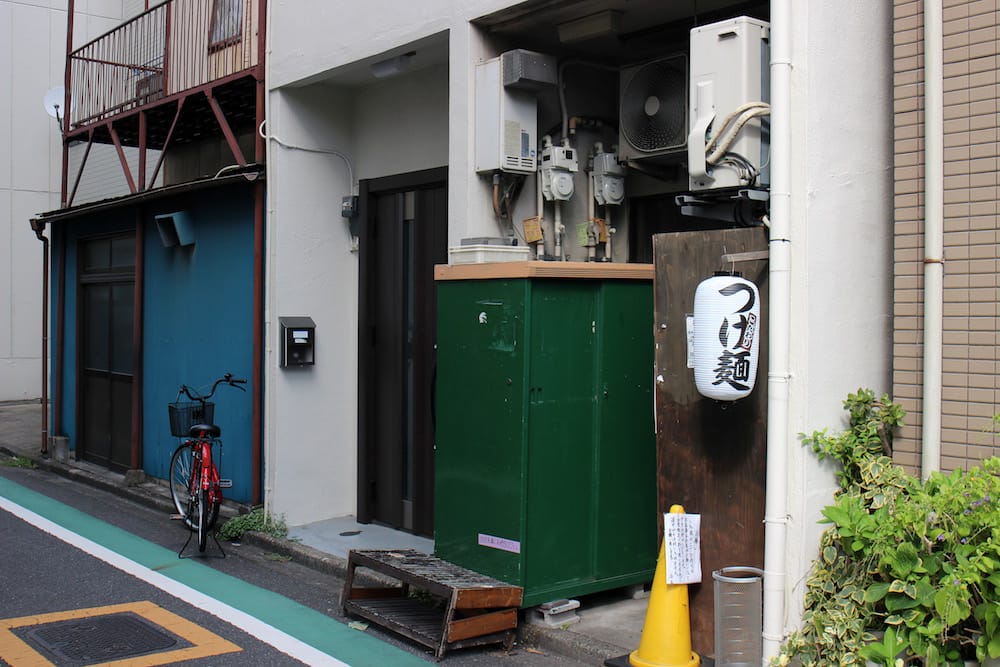
Yamazaki never had a dream for his future when he was young, but he knew that he wanted a job that gave him independence. At the age of 20, his main passion in life was surfing. After graduating from university, he was only interested in finding a job where he could take weekdays as holidays so he could visit the beach when it was less crowded, and where he could potentially meet a girlfriend.
“I was in the economics department and among 60 students, there were only two girls,” he laughs. “And because I was already into surfing, I didn’t join any of the university clubs.”
So Yamazaki found himself working in the meat section of a large supermarket, and spent Wednesdays and Thursdays surfing at a beach in Chiba Prefecture, just east of Tokyo. It was there he met a fellow surfer who ran a cake store, and he began to think that going into the food and drink business might be the right kind of job for him.
After three years at the supermarket and successfully finding a girlfriend who would later become his wife, he began to consider their future. They discussed a job that they could do together and settled on the cake business. Yamazaki, 25 years old at the time, was conscious of his late start in the business and the cost of professional schools, and so he decided to begin working right away.
After training at cake stores in Tokyo, he was inspired by one of his bosses to gain experience in Europe. Off he set for Switzerland, to Richemont, a professional school that offered a two-week chocolatier course aimed at overseas students. From there, he spent another 11 months working in both Switzerland and Belgium.
But Yamazaki had made a promise to his then-fiancée that he would return within a year of training and time was up: He moved back to Japan to marry, and then worked for another three years to save up the funds for his own store.
Thus, Sablon was born. It is situated to the east of Nippori in northeastern Tokyo, an area close to both Yamazaki and his wife’s family homes. Named after Sablon Platz in Belgium, where a famous store provided cakes for the Belgian royal family, it offers exquisitely decorated creations, from smooth chestnut Mont Blancs to strawberry cheesecakes, next to quaint wooden shelves of other sweet delights, including an impressively rich and moist fruit cake.
“I did think about opening my own tsukemen store, just a bit.” He glances behind him. “But my wife…”
Secretly, though, Yamazaki’s heart was harboring another love. At the age of 15, while working part-time in a post office in Ikebukuro, he first visited Taishoken, the store whose owner Kazuo Yamagishi is credited with inventing tsukemen, a dish of thick, chewy noodles, served separately from an accompanying thick broth. The idea is said to have originated from food provided for the staff who were busy serving ramen: the separate broth was cooler, allowing staff to eat it quickly, and keeping the noodles separate from the broth prevented them from getting soft and soggy.
“I could not believe that anything could be this delicious,” Yamazaki says, with a grin of wonder, fervently recalling the very first time he tasted Taishoken.
“I did think about opening my own tsukemen store, just a bit.” He glances behind him. “But my wife…” Perhaps not surprisingly, she wasn’t such a fan of the idea of the two of them boiling up animal bones for broth for the rest of their lives.
After two decades of making sweets, however, Yamazaki felt it was time to pursue his tsukemen passion. As a diehard fan of Taishoken, he had become acquainted with Yamagishi, whom he approached for advice on how to refine the broth. Once he had it mastered, he began offering a frozen version in the cake store. While customers were surprised at first, it soon became wildly popular. But then Yamazaki ran into regulatory trouble – the authorities decided that cake stores shouldn’t be selling frozen soup. There was only option: It was time to open his own tsukemen venture.
Although a long-standing dream, in truth, his decision came at the right time. Japan’s stagnating economy had not been good for the cake business, and Sablon’s team of six shrank to three, a result of their sagging sales. Ura Sablon is squeezed into the former break room for staff, which was no longer needed.
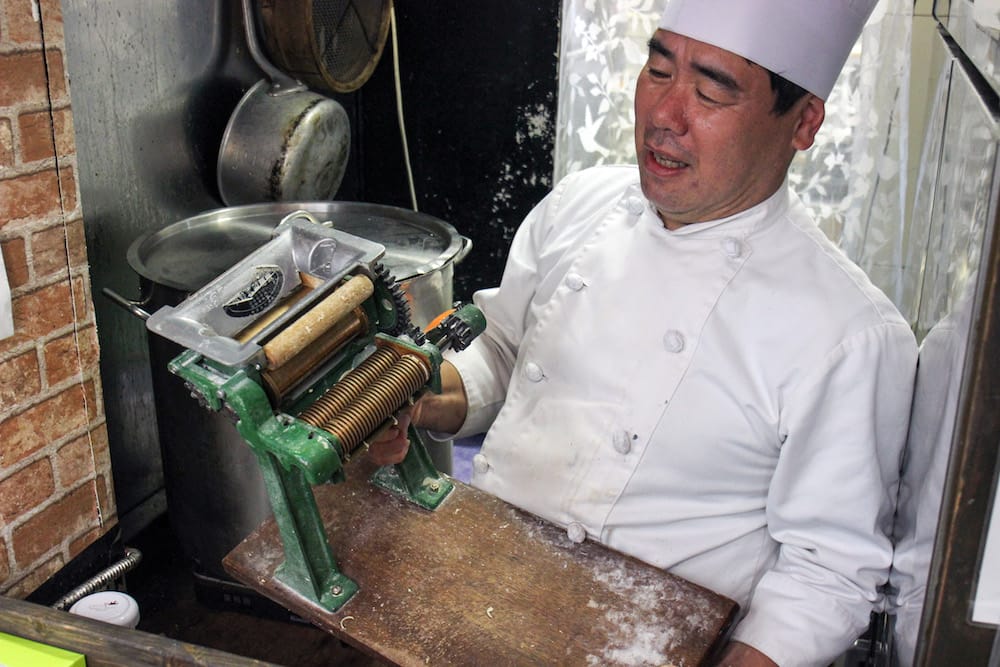
“I realized I could fit four seats in here, and that would be just about right for a tsukemen store,” says Yamazaki, who gets up at 5 a.m. every day to prepare. First he makes cakes, after which he uses the mixing machine to make the noodle dough. He then kneads the dough with his feet to bring out the elastic qualities of the gluten. Finally, he puts it through a manually operated noodle-cutting machine and cranks out 20 portions of beautiful springy noodles. The entire process takes 45 minutes.
Equal love and care is taken for the stock, which Yamazaki monitors meticulously as he boils up the ingredients three times over to fully extract the flavors. Taishoken’s broth is a chicken and pork mix, with a light seafood fragrance from dried sardine and mackerel. “Tokyo-style ramen is often chicken and seafood, flavored with soy sauce. But adding pork ups the glutamine and increases the deliciousness by three to four times!” he says.
Yamazaki’s experience at the supermarket meat section long ago has come in handy. He is able to choose the best meat for the broth and also for the char siu (barbecue pork) that forms a delectably soft and dangerously delicious topping. “Even among the same cuts of meat, the quality differs. I learned how to pick out the best pieces with finely marbled fat.”
Ura Sablon only opens between 11:30 a.m. and 2 p.m., offering its 20 portions on a first-come, first-served basis. In its four years of operation, it has built up quite a reputation; it’s not unusual to see eager customers lined up on small wooden benches opposite the entrance.
And customers should not visit Ura Sablon unless they are hungry. Yamazaki closely follows tsukemen pioneer Yamagashi’s motto of delicious, cheap and stomach-filling. “It doesn’t matter if customers can’t eat it all. But too many ramen stores taste good but don’t give you nearly enough,” he explains as he serves up 300 grams of noodles as the standard portion.
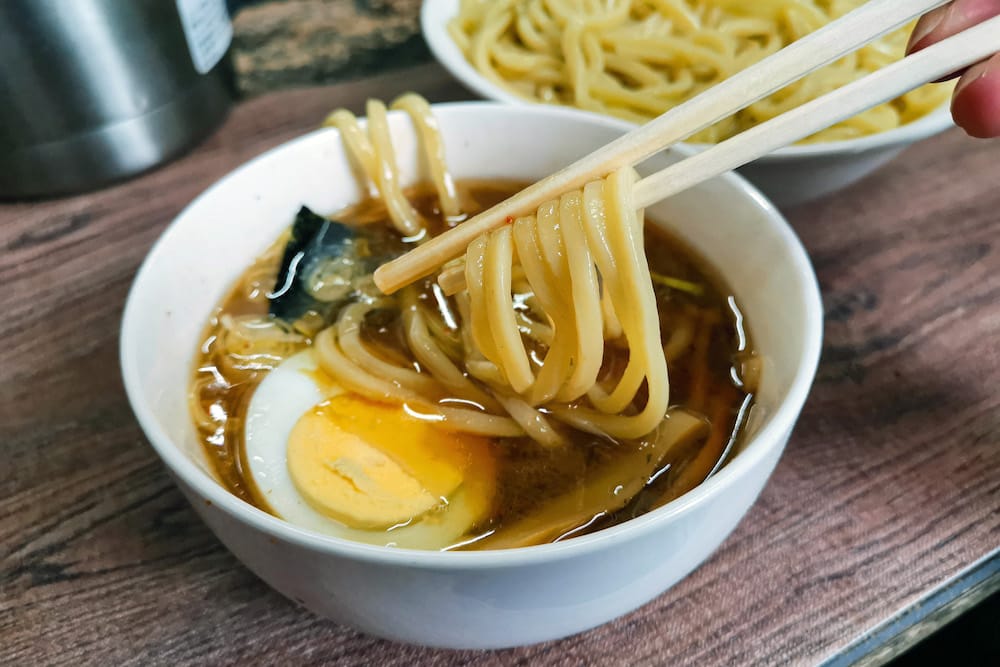
In addition to the Taishoken tsukemen option, Yamazaki has launched his own creation, a type of tsukemen described as “New California Fusion,” although he confesses the name has no meaning other than a nod to how his surfing background has made him want to visit California one day.
“I made it in the image of a cake. Something that is sweet, creamy and has a touch of sourness. Basically like a cake,” he says.
Indeed, it is rich and creamy, almost overwhelmingly so, especially when combined with the soft, fatty char siu. The Taishoken version is not much lighter – both walk that sweet-salty balance that leaves the tongue craving more, unable to decide which sensation wins out. The noodles, too, are a perfect springy texture, easily coated with sauce and fun to slurp. Yamazaki has not only brought a deep-rooted passion to life but has possibly brought tsukemen to their zenith.
Such a sweet story should have a sweet ending. For a mere 200 yen (less than $2), customers with ample stomach capacity can enjoy the “special dessert,” a small plate that demonstrates Yamazaki’s exquisite pastry skills.
Ura Sablon might be tucked out of sight like an afterthought, but the four-seat space combines all the good things in life into one.
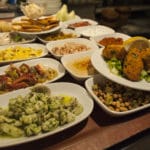 October 12, 2016 October in Istanbul: Fall Meyhane Evenings
October 12, 2016 October in Istanbul: Fall Meyhane Evenings
October might be the most beautiful month to be in Istanbul, and there might not be a […] Posted in Istanbul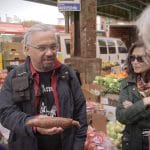 February 24, 2022 Native Dish
February 24, 2022 Native Dish
Based on NYC Media’s new food TV series, “Native Dish: United Flavors of NYC,” Culinary […] Posted in Queens May 6, 2013 Andorra
May 6, 2013 Andorra
As a child, Manel Palou spent hours playing in the kitchen of Andorra, his parents’ […] Posted in Barcelona
Published on October 22, 2019
Related stories
October 12, 2016
IstanbulOctober might be the most beautiful month to be in Istanbul, and there might not be a better time to enjoy a wide range of meze and rakı on our meyhane tour.
Let Esneider guide you through the borough of global eats on one of our Queens walks
February 24, 2022
QueensBased on NYC Media’s new food TV series, “Native Dish: United Flavors of NYC,” Culinary Backstreets brings you a behind-the-scenes look at some of the New Yorkers featured in these short videos. The series, which aims to celebrate New York City immigrants from all over the world, focuses on one individual and one dish at a time as…
May 6, 2013
Barcelona | By Johanna Bailey
BarcelonaAs a child, Manel Palou spent hours playing in the kitchen of Andorra, his parents’ restaurant in Barcelona’s Barrio El Born. Later, as a teenager, he helped out behind the counter while his brother Miki cooked in the kitchen. Originally bought by his grandfather in 1952, the small restaurant had been around for as long…







































